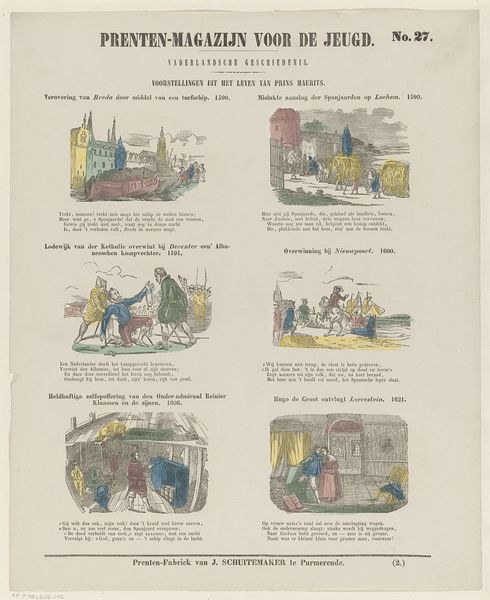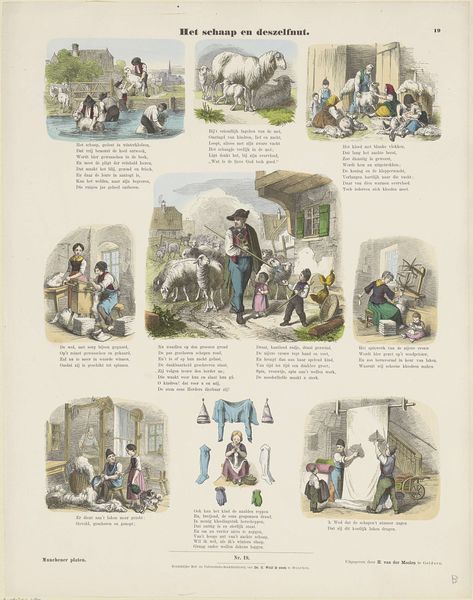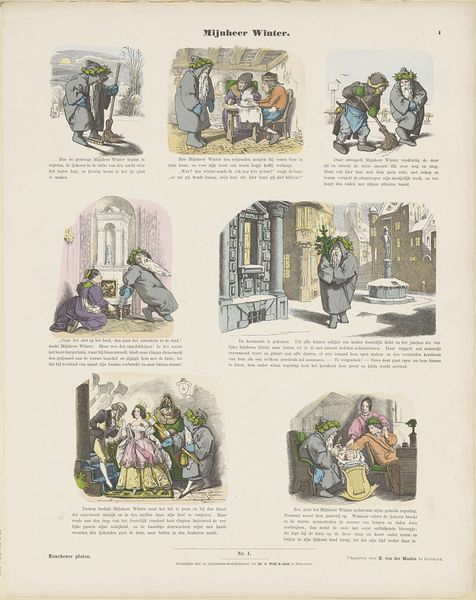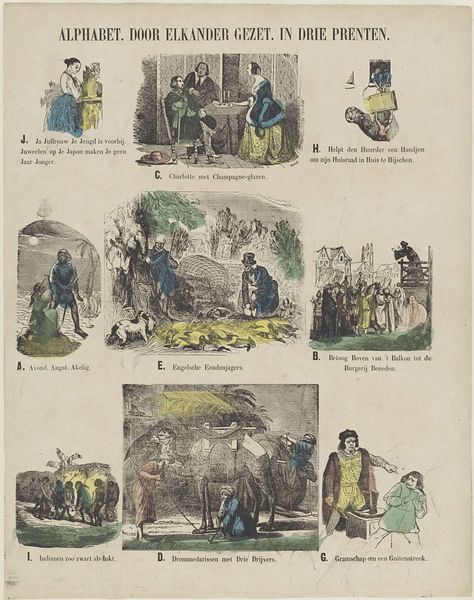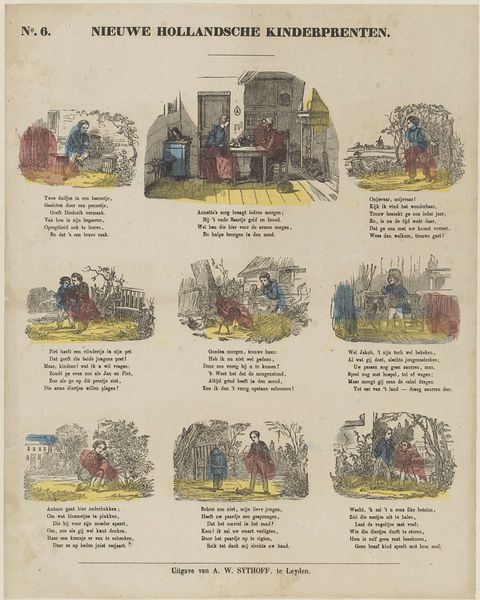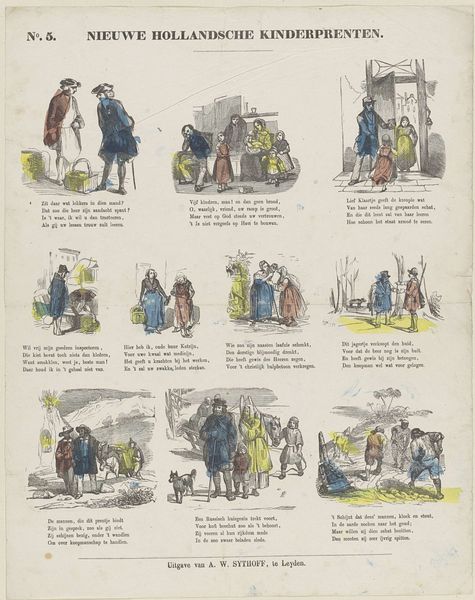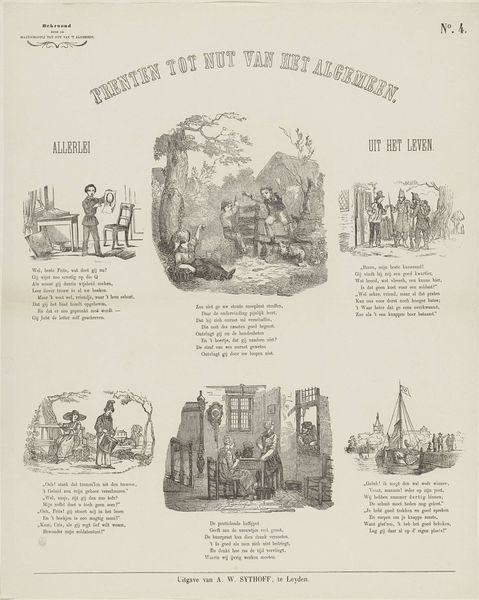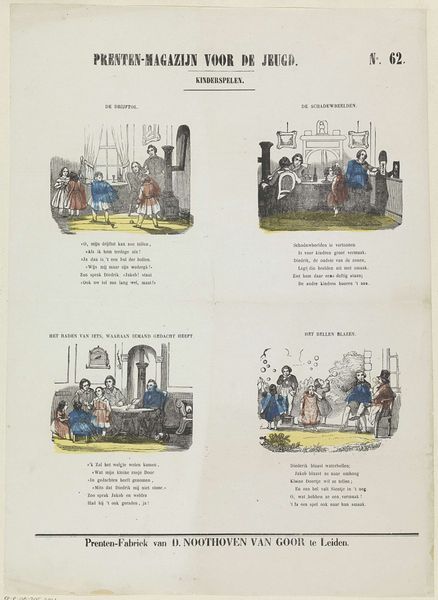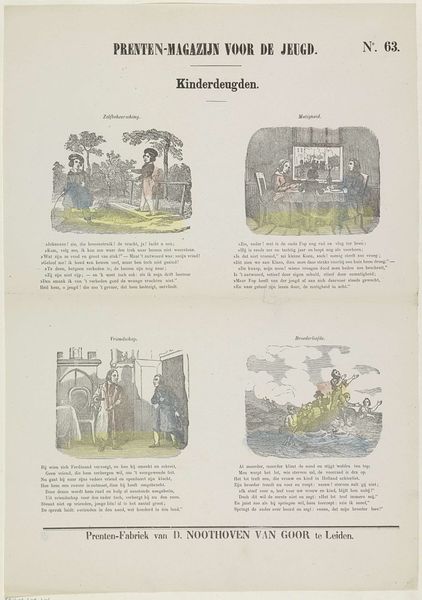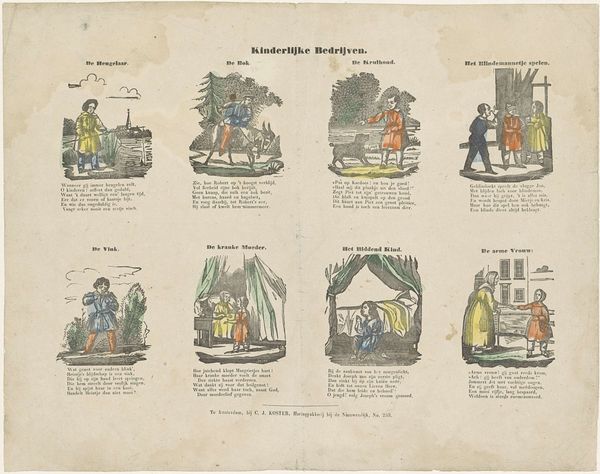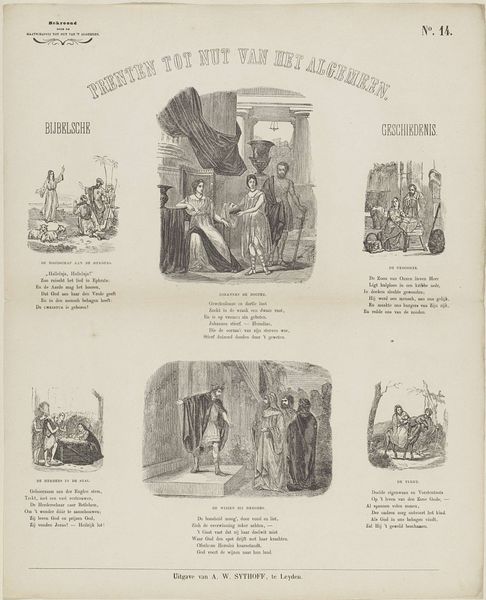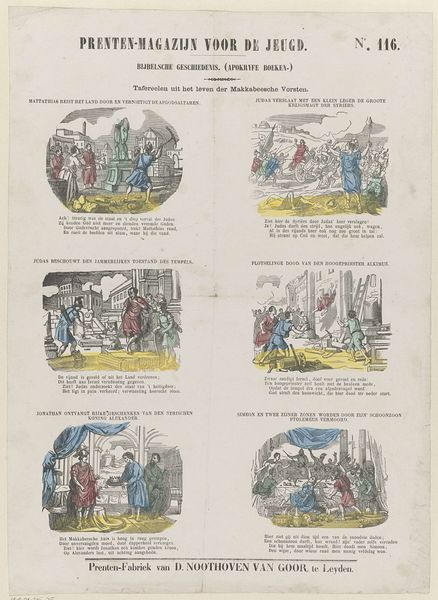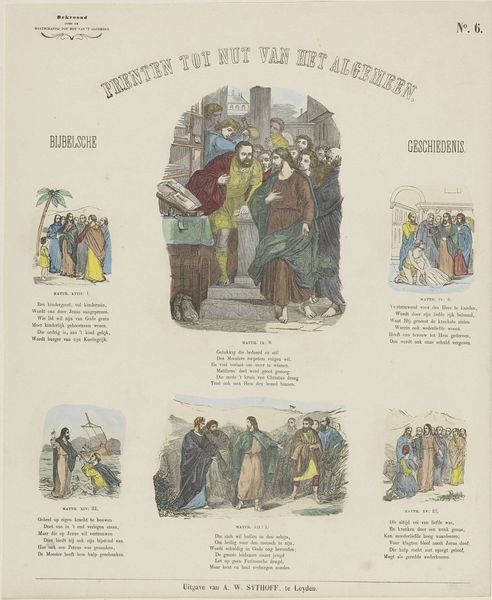
print, watercolor
#
narrative-art
# print
#
watercolor
#
watercolour illustration
#
genre-painting
#
history-painting
#
watercolor
Dimensions: height 412 mm, width 330 mm
Copyright: Rijks Museum: Open Domain
Editor: This print, titled "Bijbelsche geschiedenis" which translates to "Biblical history", is dated between 1861 and 1929. It's a watercolor and print piece housed in the Rijksmuseum and made by Albertus Willem Sijthoff. The various scenes depicted are fascinating! How do you see this fitting within the art historical context? Curator: What stands out to me is how the print seeks to disseminate visual narratives, explicitly stating "Prenten tot nut van het algemeen," or "Prints for the benefit of the public." Considering the period, and the rise of print culture, the explicit aim of using images for public education aligns with larger social and cultural trends where visual media became instruments for conveying history and moral narratives. How do you think these narratives are being utilized? Editor: I’m curious, since some look Biblical and some don't -- do you think the intent was simply didactic, to spread stories in a easily consumed manner to people without access to formal education? Curator: It's plausible. We also need to think about who commissioned or supported such works. Religious organizations? Was it part of a larger nationalistic project? We must remember, museums and educational institutions play a huge role in shaping public perceptions, and something like this has echoes of state-sanctioned educational narratives. I'm wondering about how audiences then, would have experienced these as either purely religious or political statements. Editor: So it’s not just the art itself, but how institutions contextualized it for the public? Curator: Precisely. It's not enough to simply describe scenes of each story, rather one must recognize the socio-political conditions that made their display and circulation possible in the first place. That has altered my understanding of the role such accessible visual formats could serve. Editor: Right, it is important to think about the original audience. This really highlights how much historical context affects the way we understand a piece. Thanks!
Comments
No comments
Be the first to comment and join the conversation on the ultimate creative platform.
